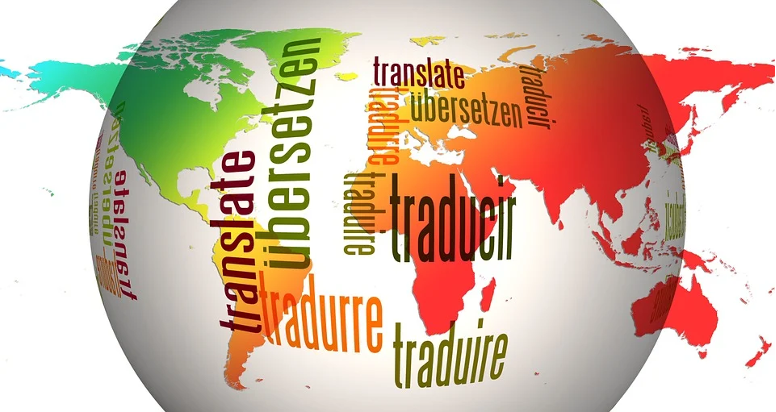Simultaneous interpretation refers to the use of two experts who translate a conversation from one language to another at the same time. This is often done during international conferences, high-level diplomacy, and other events where languages are needed to break down barriers between cultures. In general, it’s a very hard job to do – so how do they manage this? This guide aims to help you better understand how simultaneous interpretation works. It will cover the basics of the process, show how it can be done, and also offer some insights into what is involved in being a simultaneous interpreter. Read this guide to get a better understanding of how this important process works.
What Is Simultaneous Interpretation?
First of all, it’s important to understand what simultaneous interpretation is. The folks at a company that offers translation services in Dallas explained that it is the translation of a conversation from one language to another, at the same time. This is done by two experts – a translator and an interpreter – who work together to ensure that the conversation is accurately translated for all participants. This process used a variety of settings – from business meetings to international conferences.
In general, there are two types of simultaneous interpretation: consecutive and conference. Consecutive interpretation is where the interpreter waits until a speaker has finished their sentence or paragraph before they interpret. Conference interpretation involves translating in real-time, which is generally much more difficult. As the name suggests, conference interpretation using during conferences. Where there are many different speakers with different backgrounds and topics.
How Do Simultaneous Interpretation Services Work?
When you need simultaneous interpretation services, it’s important to work closely with your interpreter to ensure that the process goes smoothly. This starts before the event even begins – if you’re hiring a freelance interpreter. You’ll need to provide them with all of the relevant information ahead of time. This includes the topics that will be discussed, as well as any special terminology or jargon that might be used. During the event itself, the interpreter will sit next to the speaker and will translate everything that is said.
They can also sit somewhere else so that they’re not seen as a distraction – most users of simultaneous interpretation services will encourage this. They may also use note-taking software or hand gestures to translate numbers or names if these are relevant. Guests of the conference will get a device that they can use to hear the interpreted speech through headphones. This ensures that they don’t miss a single word.
What Are The Benefits Of Simultaneous Interpreting?
One of the main benefits of simultaneous interpretation is that it allows members of different cultures to communicate with one another in real-time. This can be incredibly beneficial in a business setting, as it can help to break down barriers and encourage collaboration. In addition, simultaneous interpretation allows people with different language skills to participate in conversations. This particularly useful international conferences, where there is a wide range of languages spoken. It also helps to ensure that everyone understands what is being said. This can be particularly important in legal or medical settings.
What Skills Are Needed To Do Simultaneous Interpreting?
Being a simultaneous interpreter is incredibly difficult. After all, there are several skills that need to be mastered before you can do it effectively. This includes the understanding literal meaning, researching the topic ahead of time, and typing quickly on your computer or note-taking device. You’ll also need to be able to think clearly under pressure, as well as work accurately and efficiently. Not only that, but you’ll need outstanding listening skills so that you can understand what speakers are saying in their own language before it’s time to interpret. Of course, an interpreter also needs a diploma or degree in translation and interpretation studies. These skills are taught in a number of different schools and universities.
How Do I Find A Good Simultaneous Interpreter?
When you’re looking for a simultaneous interpreter, there are several factors that you’ll need to consider. First of all, you’ll need to make sure that they have the relevant skills and experience. In addition, you’ll need to find an interpreter who is comfortable working in a business setting. They should also be able to work with a wide range of different languages, and have excellent listening skills. Finally, they need to be comfortable working closely with you. After all, an interpreter will have to work very closely with you during the course of a business meeting or conference, so it’s important that they’re friendly and professional at the same time.
You’ll also want to consider how much simultaneous interpretation costs before hiring somebody for the job. There are many different factors that will affect the price. These include the language combination, the level of expertise required, and the amount of travel involved. However, you should expect to pay at least $100 per hour for a high-quality interpreter. You can usually find a list of qualified interpreters on the website of your local translation or interpretation society. Make sure to interview a few different interpreters before making your final decision. You can also ask for references from past clients.
Conclusion
Simultaneous interpretation is a complicated and difficult task to do. It takes two experts who translate one language into another at the same time. This is usually important during international conferences or high-level diplomacy where different cultures need to work together. In order for this type of translating to be done well, it’s important that an interpreter has relevant skills and experience. They also need excellent listening skills and the ability to work with various languages.
They should also be able to work closely with you in your business setting because they will have a lot of contact throughout meetings or conferences. These interpreters are not cheap either – expect rates anywhere from $100-$300 per hour depending on many factors such as what language combination there is, how much travel involved, etc. Hopefully, this article has helped to give you a better understanding of what simultaneous interpretation is and how it works.


